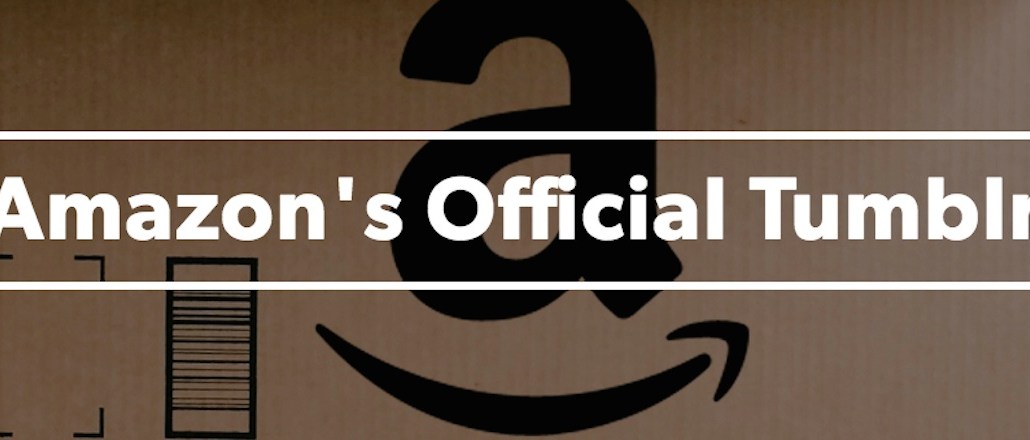
Shoppers rely on Amazon for paper towels in bulk, cheap paperback books, and the entire series of “The OC” on DVD — stuff that couldn’t be found anywhere else. But there’s a darker, weirder side to Amazon’s offerings, and it lives on the retailer’s official Tumblr page.
Consider it an appeal to the millennial, well-versed in Tumblrspeak. Amazon is keeping it chill on the platform to fit in with the cool kids of the Internet. It uses its Tumblr feed to share, nonchalantly, some of the more bizarre stuff you can buy on the site, or as the page puts it, “all the items you never knew you needed.”
It’s a self-knowing SkyMall for the cool kids.
A few items populating the feed: the NapSack sleep hood (along with the Amazon caption, “NEED”), Tumblr for Dummies (“FYI”), an Inflatable Unicorn Horn for Cats (“Why?”), and a Whiskers on Kittens scented Yankee Candle (“Good, or greatest candle scent?”).
“It’s consistent with how people behave on Tumblr,” said Kyle Bunch, managing director of social at R/GA. “The balance you have to find is between who you are as a brand and how you can authentically connect with communities. This doesn’t look like Amazon’s website, but it still fits because you can buy everything.”

Amazon may be new to Tumblr — it joined the platform earlier this year — but the Amazon team who runs the Tumblr account is not new to the Internet. All of the online community’s obsessions — like cats, pizza, hating Mondays, wine, ‘90s nostalgia and the general “that’s so random” fodder — are channeled through some odd product you can buy on Amazon. Bunch likened it to the weirdness of Denny’s Tumblr, which turns its dishes into funky GIFs, like the “shrimprov comedian.”
Ad position: web_incontent_pos1
“We work to entertain and engage our customers across different social networks,” said an Amazon rep. “To do this, we adapt content to reflect both the customers using that network and the norms of that network. Our Tumblr content approach is to highlight fun, unique and interesting products sold on Amazon using funny reviews, GIFs and other hallmarks of that platform.”
If you do want to shop for something you see (maybe the Lego slippers or “50 Shades of Bacon”?), you can get to the Amazon product page from Tumblr in one click. Not quite as efficient as one-click Amazon Prime checkout, or the native click-to-buy buttons populating other social platforms like Facebook, Pinterest, Twitter and Instagram, but close.
On Twitter, Amazon follows suit with the style of all other brands that want to be in on the Internet’s jokes and trends, a formula exemplified in this Throwback Thursday/National Hot Dog Day hybrid tweet.
The perfect #ThrowbackThursday product for #NationalHotDogDay https://t.co/84LB7AubWT pic.twitter.com/hkU2uXrUu4
— Amazon (@amazon) July 23, 2015
The hashtags show that Amazon is trying to fit into the conversation happening on Twitter (as brands often try to do), but it’s a transparent product push. Yawn. As much as some brands like to seem fun and easygoing on Twitter, professionalism is still required.
“People look to get customer service through Twitter,” said Bunch. “It can quickly feel like you’re being too weird or too flippant where people want to have an adult on the other side.”
Ad position: web_incontent_pos2
Unlike Twitter, Tumblr isn’t a conversation. Amazon can go rogue, its feed a random assortment of products not tied to any ongoing hashtag or arbitrary national food day. The feed (once it fleshes out to include more products, at least) can be as addicting and entertaining as getting sucked into the reviews of the notorious Haribo Sugar-Free Gummy Bears on Amazon. (Spoiler: these sugar-free gummies did not sit well with consumers.)
“The key on Tumblr is to give people what they want,” said Bunch. “In fact, I can totally see a [non-associated] Tumblr that does exactly this existing out there.” Turns out he’s not wrong, though it hasn’t been updated for a while.
More in Marketing

In the marketing world, anime is following in the footsteps of gaming
As marketers look to take advantage of anime’s entry into the zeitgeist, they might be wise to observe the parallels between the evolution of anime as a marketing channel and the ways brands have learned to better leverage gaming in recent years.

With the introduction of video ads and e-commerce, Roblox looks to attain platform status
Roblox is expanding into more areas than just ads in 2024. Much like platforms such as Amazon and Facebook have transcended their origins to evolve from their origins as online marketplaces and social media channels, Roblox is in the midst of a transformation into a platform for all elements of users’ virtual lives.

PepsiCo wants to remain a ‘driver of culture’ as it turns to influencers and activations amid rebrand
The soda-maker says it can translate cultural relevance into sales volume.
Ad position: web_bfu